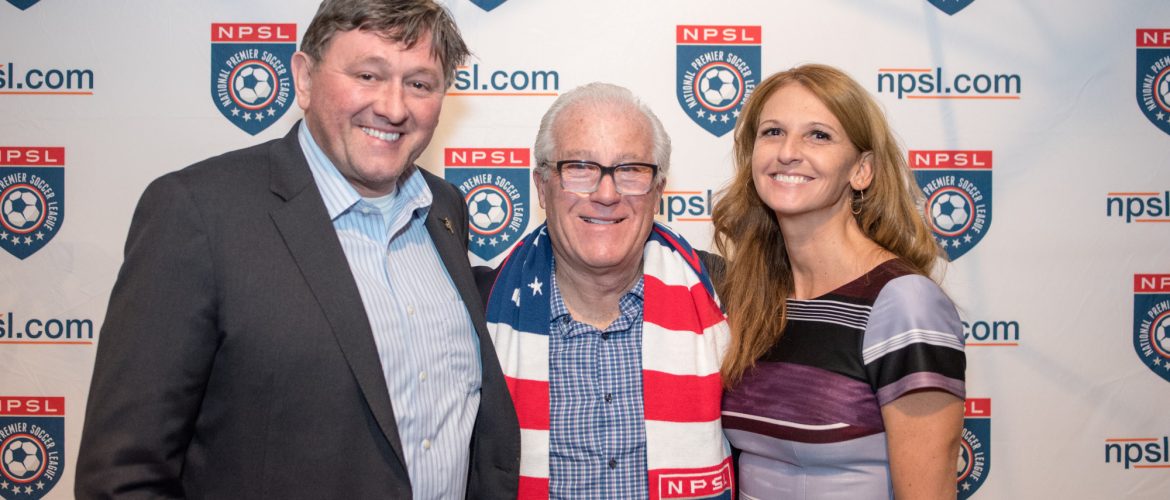On Sirius XM FC on September 17th, the NPSL announced that they would be making the jump into a two-season system. The summer season will remain in place and, as NPSL Chairman Kenny Farrell said, will take precedent when looking at any possible tough decisions, but there will be a spring/fall season as well. Spring will run in March and April, teams will then break for summer season, then teams that will continue playing in fall will resume play in that season from late-August through to November.
Farrell noted that one of the driving forces for bringing about the change is the influx of teams doing well, but having too short of a season. Farrell said that teams would have a build-up of people in the crowd, but only playing five home games or so halts momentum early. With this change, clubs who want to play full seasons can help build up their community through more matches, but also the summer season is protected as well.
The protection of the summer season was vital in the process of making this change to the two seasons. The summer season is one in which, “Every single team registering in the NPSL has to play in,” Farrell noted. He emphasized this later in our conversation where he said, speaking on future plans of the league and the possibility of one longer season, “I think if that happens there’s a good possibility that there will still be a summer season and that may end up being two leagues.” The NPSL remain aware that the bread and butter of the league is the summer season and are intent and keeping it alive and well at all costs.
In the U.S. soccer landscape, Farrell also noted that there was a gap for high-level, year-round, amateur soccer. Not only is this for the community, but also for the players as Farrell said clubs could “build teams from the community out” in regards to players in any given area. “They still want to play at the highest level, they still want to train 3-4-5 times a week, they want to play great games on the weekend in a national league. And we saw an opportunity to do that.” Whether young players out of college or players in the area who still want to play, this serves as an opportunity to keep players active year-round and involved in the community.
The community aspect was vital in the change and this was a big focal point that Farrell made sure to note. He drew comparisons to the likes of the Conference in England where teams, “get their communities and they get their sponsors and local media all built around their team.” He described the way in doing this as a “creative” way to both keep players playing and getting communities involved, and the two-season system was decided upon as the way of doing that.
Of course, things could always change in the future. Farrell noted that in two or three years this system as it currently will stand in 2020 will be reviewed and possibly be altered into becoming a full national league across the country. “We see the opportunity to become that league,” said Farrell speaking of the lack of national amateur league. As he touted a good staff and high minimum standards, he noted that the floor was already set for something like this to potentially be built up if that is the direction chosen to go in.
Team news is always what fans desire to hear about, but there is nothing set in stone yet. Farrell did note interest by NPSL sides saying, “There’s multiple…that have said, ‘If this is correct, we’d love to do this.’” Things in this season will be different than just joining the NPSL’s summer season. Even teams that would join out of the NPSL would get re-vetted for this new season in order to ensure stability within the new season.
With the way the two seasons are set up, there is the possibility, perhaps even the probability, that sides who play in the summer and spring/fall season will see different opponents. Additionally, in terms of the set-up of the second season, things will be stricter for teams wishing to apply. “The minimum standards may be a little bit more rigorous,” Farrell noted. But the compromise is that, “The cost of playing in this league will be so much below what professional league standards, Division 3, is, that it will make it, hopefully, a very viable league to succeed in within the community year-round.”
Looking at possible models, Farrell highlighted the NPSL’s western teams as being possibilities to model around. Teams in the Golden Gate and Southwest Conferences play a season that more resembles a spring/summer year, starting in late-February, and ending with the end of the NPSL summer season. Farrell also said that Northeast teams could be a target as well, given the minimal amount of travel that would be required given their proximity. He also hopes that this will help to create more giant-killing NPSL sides in the U.S. Open Cup.
The frontier of the NPSL is now immediately changing with the addition of this second season. We could see another change in two-three years’ time with a longer season and a summer season. For now, though, the outlook from Farrell is positive for clubs within their community. “New clubs will see this as an opportunity to build in a national league over a period of time,” he said. With a longer season now in motion, the wait begins to see who will be involved and what the face of the NPSL will look like throughout the 2020 season.

